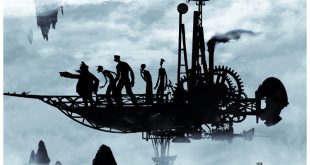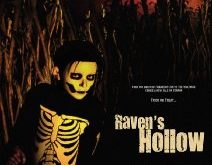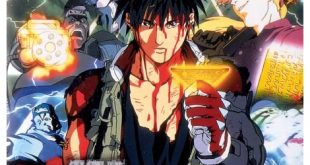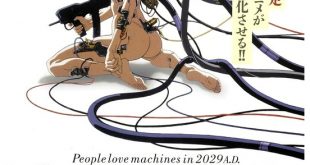 SYNOPSIS:
SYNOPSIS:
“Kaneda is a bike gang leader whose close friend Tetsuo gets involved in a government secret project known as Akira. On his way to save Tetsuo, Kaneda runs into a group of anti-government activists, greedy politicians, irresponsible scientists and a powerful military leader. The confrontation sparks off Tetsuo’s supernatural power leading to bloody death, a coup attempt and the final battle in Tokyo Olympiad where Akira’s secrets were buried thirty years ago.” (courtesy IMDB)
REVIEW:
While many people’s idea of animation begins and ends with a certain mouse, others look to Japan for animation inspiration. Though Western audiences were initially slow to tune-in, there was a groundswell in interest during the late eighties in ‘Japanimation’ helped in no small part by the release onto DVD of many quality anime titles. Growing out of Japanese manga (comics) pioneered by the godfather of manga Osamu Tezuka – with his novel-length comic Shintakarajima also known as New Treasure Island – anime has undergone several transitions on its path to Western acceptance.
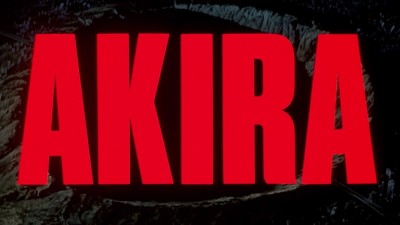 Inspired by the success of Walt Disney Studios as well as Tezuka’s groundbreaking art, Hiroshi Okawa‘s film company Toei released the first full-length anime film The Tale Of The White Serpent (1958). Tezuka himself entered the anime arena in 1961 with the television series Astro Boy. Anime has grown in leaps and bounds, gaining sophistication during the seventies with favourites such as Gigantor and Battle Of The Planets. During the eighties, spurred by the advent of domestic video, the darker side of anime was beginning to emerge. Fueled by that decade’s dystopian cyberpunk literature, anime took the form that many now recognise, exemplified by Katsuhiro Otomo‘s masterful Akira (1988).
Inspired by the success of Walt Disney Studios as well as Tezuka’s groundbreaking art, Hiroshi Okawa‘s film company Toei released the first full-length anime film The Tale Of The White Serpent (1958). Tezuka himself entered the anime arena in 1961 with the television series Astro Boy. Anime has grown in leaps and bounds, gaining sophistication during the seventies with favourites such as Gigantor and Battle Of The Planets. During the eighties, spurred by the advent of domestic video, the darker side of anime was beginning to emerge. Fueled by that decade’s dystopian cyberpunk literature, anime took the form that many now recognise, exemplified by Katsuhiro Otomo‘s masterful Akira (1988).
 The modern anime masterpiece that was instrumental in bringing Western audiences attention to the exciting world of anime, Akira is still a marvel of imagination and art. Backed by a then-record budget of US$10 million, Akira was the most expensive feature-length anime ever created. Its cutting-edge artwork rivaled anything yet produced by Disney or any other major Western creators of popular animation and its sophisticated story-line – replete with multidimensional characters and scenes of graphic violence – appealed to both adult and teenage audiences worldwide.
The modern anime masterpiece that was instrumental in bringing Western audiences attention to the exciting world of anime, Akira is still a marvel of imagination and art. Backed by a then-record budget of US$10 million, Akira was the most expensive feature-length anime ever created. Its cutting-edge artwork rivaled anything yet produced by Disney or any other major Western creators of popular animation and its sophisticated story-line – replete with multidimensional characters and scenes of graphic violence – appealed to both adult and teenage audiences worldwide.
 Envisioning a future where the streets of post-apocalyptic Neo-Tokyo are ruled by biker gangs and the upper echelons of society is ridden with intrigue, the movie concerns the exploits of Shotaro Kaneda (Mitsuo Iwata) and Tetsuo Shima (Nozomu Sasaki), two members of a teenage biker gang engaged in a brutal turf war with a rival group of thugs called the Clowns. While running for his life with two Clowns in close pursuit, Tetsuo encounters the mysterious Takashi (Tatsuhiko Nakamura), a young boy recently rescued from a government research facility by a terrorist group known as the Resistance.
Envisioning a future where the streets of post-apocalyptic Neo-Tokyo are ruled by biker gangs and the upper echelons of society is ridden with intrigue, the movie concerns the exploits of Shotaro Kaneda (Mitsuo Iwata) and Tetsuo Shima (Nozomu Sasaki), two members of a teenage biker gang engaged in a brutal turf war with a rival group of thugs called the Clowns. While running for his life with two Clowns in close pursuit, Tetsuo encounters the mysterious Takashi (Tatsuhiko Nakamura), a young boy recently rescued from a government research facility by a terrorist group known as the Resistance.
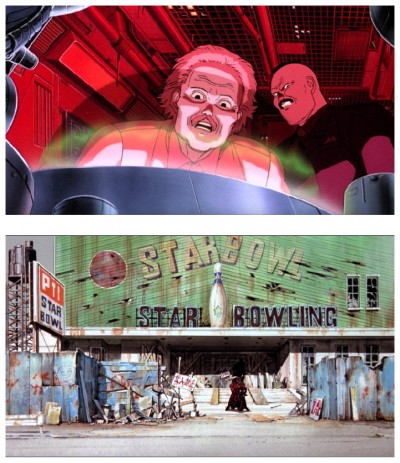 Almost immediately, government soldiers arrive in helicopters, taking Takashi as well as Tetsuo, Kaneda and the rest of the biker gang into custody. A fast-paced adventure that encompasses several planes of action, Akira features explosive skirmishes between Neo-Tokyo’s military leadership and resistance fighters determined to disrupt inhuman biological experiments, a battle of wills between Kaneda and Tetsuo, two friends whose relationship is stretched to the breaking point by petty jealousies and, lastly, the arrival of eponymous post-human entity Akira, a being whose rage sends the film’s narrative rocketing toward its unforgettable apocalyptic finale.
Almost immediately, government soldiers arrive in helicopters, taking Takashi as well as Tetsuo, Kaneda and the rest of the biker gang into custody. A fast-paced adventure that encompasses several planes of action, Akira features explosive skirmishes between Neo-Tokyo’s military leadership and resistance fighters determined to disrupt inhuman biological experiments, a battle of wills between Kaneda and Tetsuo, two friends whose relationship is stretched to the breaking point by petty jealousies and, lastly, the arrival of eponymous post-human entity Akira, a being whose rage sends the film’s narrative rocketing toward its unforgettable apocalyptic finale.
 The movie consists of 2,212 shots and 160,000 single pictures, almost three times more than usual, using 327 different colours (another record in animated movies), fifty of which were exclusively created for the film. The reason for this statistic is that most of the movie takes place at night, a setting that is traditionally avoided by animators because of the increased colour requirements. This was also one of the first Japanese anime films to have the character’s voices recorded before they were animated. While this is the typical practice in Western animation, in Japan the animation is generally produced first. Furthermore, the music for the film was completed before any of the composers saw a frame of film or read the script so, of course, the music had to be re-edited to fit certain scenes.
The movie consists of 2,212 shots and 160,000 single pictures, almost three times more than usual, using 327 different colours (another record in animated movies), fifty of which were exclusively created for the film. The reason for this statistic is that most of the movie takes place at night, a setting that is traditionally avoided by animators because of the increased colour requirements. This was also one of the first Japanese anime films to have the character’s voices recorded before they were animated. While this is the typical practice in Western animation, in Japan the animation is generally produced first. Furthermore, the music for the film was completed before any of the composers saw a frame of film or read the script so, of course, the music had to be re-edited to fit certain scenes.
 Upon its release in Tokyo, Akira shattered box-office records for an animated feature, and its subsequent success in North America inevitably sparked plans for a big-budget live-action remake. The astronomical amount of funding necessary for a live-action version, however, has inevitably led Hollywood producers to repeatedly shelve their plans. The last time (as of this writing) was in January 2012 when production has been ‘shut down’ indefinitely for the fourth time.
Upon its release in Tokyo, Akira shattered box-office records for an animated feature, and its subsequent success in North America inevitably sparked plans for a big-budget live-action remake. The astronomical amount of funding necessary for a live-action version, however, has inevitably led Hollywood producers to repeatedly shelve their plans. The last time (as of this writing) was in January 2012 when production has been ‘shut down’ indefinitely for the fourth time.
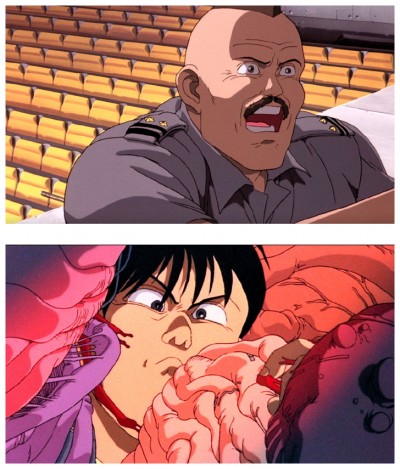 Akira was eventually released in the United States by Streamline Pictures in 1990 then, a decade later, Pioneer/Geneon obtained the license to the film and spent almost a million dollars in restoring the audio and video quality, as well as recording an all-new more accurate English dub. Because Madman Entertainment licensed Akira through Manga Entertainment rather than Pioneer/Geneon, the Australian DVD release has both the original Streamline dub (which Manga has the license to) and Pioneer/Geneon’s new English dub, as well as a fascinating 48-minute ‘making-of’ documentary. Now it’s time for me to politely invite you to join me again next week when I have another opportunity to scoop out your brain and drop it in a bucket with another spine-tingling journey to the dark side of…Horror News! Toodles!
Akira was eventually released in the United States by Streamline Pictures in 1990 then, a decade later, Pioneer/Geneon obtained the license to the film and spent almost a million dollars in restoring the audio and video quality, as well as recording an all-new more accurate English dub. Because Madman Entertainment licensed Akira through Manga Entertainment rather than Pioneer/Geneon, the Australian DVD release has both the original Streamline dub (which Manga has the license to) and Pioneer/Geneon’s new English dub, as well as a fascinating 48-minute ‘making-of’ documentary. Now it’s time for me to politely invite you to join me again next week when I have another opportunity to scoop out your brain and drop it in a bucket with another spine-tingling journey to the dark side of…Horror News! Toodles!
 Horror News | HNN Official Site | Horror Movies,Trailers, Reviews
Horror News | HNN Official Site | Horror Movies,Trailers, Reviews


